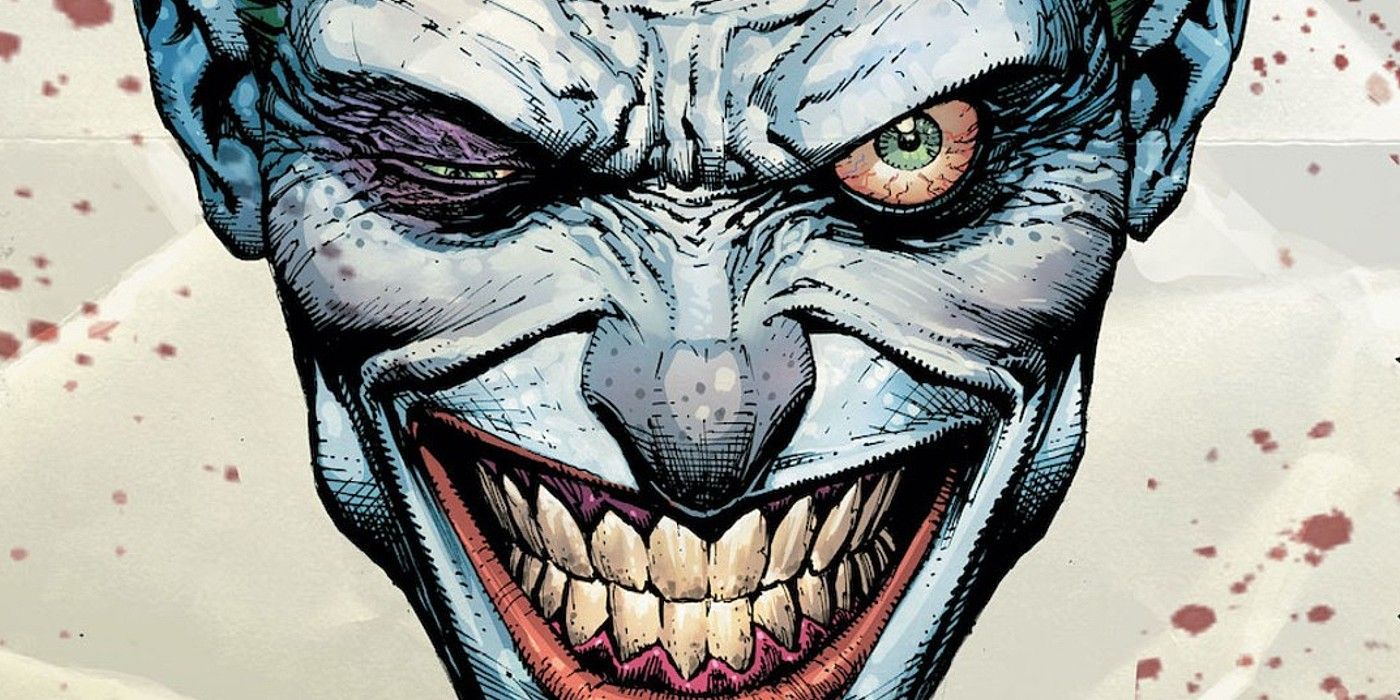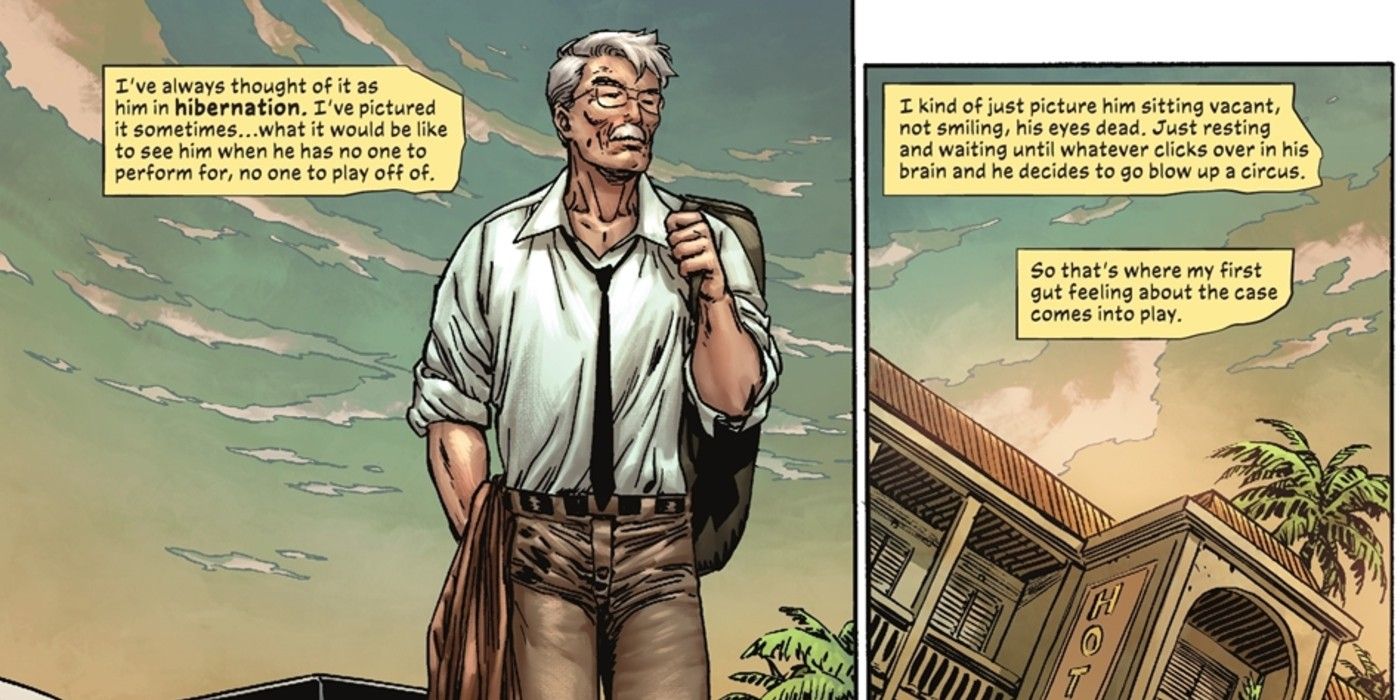Warning! Spoilers ahead for The Joker #3!
After years of investigating, Police Commissioner Jim Gordon has come to the conclusion that the only time Joker kills is when there's an audience or when he's reacting to something. This realization comes during a lengthy internal monologue as Gordon hunts for the Clown Prince of Crime in a remote area of South America that, surprisingly, leads the commissioner right to his target almost immediately.
Gordon's hunt is not sanctioned by the Gotham City Police Department in any shape or form, as the point of the mission is to not bring Joker to justice but to kill him. Gordon doesn't even know the name of the woman who presented this opportunity to him, going only by the name Cressida. Despite her secrecy, it's assumed she's one of the many criminals who are seeking Joker's blood after A-Day when the inmates and staff of Arkham Asylum were killed by Joker Gas.
When following his first major lead, Gordon spends the majority of his time speaking with the locals of this remote location and taking advantage of the unlimited funds at his disposal, courtesy of Cassandra, is all in an effort to coax answers from those he engages with by using expensive liqueur. This would have been a rather bland part of the issue if Gordon's thoughts weren't shared with the reader as this is when he presents his analysis, in The Joker #3, by James Tynion IV, Sam Johns, Mirka Andolfo and Guillem March.
Gordon's thoughts are filled to the brim with golden nuggets of information, but what stands out is the moment he shares how Joker's method of killing is the exception to most serial killers, saying, "It's a deliberate choice, every time, and it doesn't come from bloodlust. It's part of the performance, and that is what makes it so difficult to find him during his inactive periods." But Gordon's most chilling statement comes from when he envisions how Joker spends his time without an audience, as he describes Joker just staring out into space with no smile on his face.
While Gordon has a point, the problem with DC sharing this analysis, in addition to other insights Gordon reveals in earlier issues, is that these efforts define Joker, robbing him of his enigmatic persona that makes him so appealing. But there is one positive that comes as a result of DC unveiling this theory. It creates the allusion that Joker doesn't really exist as an individual, that he is the embodiment of the ways in which chaos reacts to and views society. How Gordon envisions Joker when he's alone creates the impression that, the only time his eyes are not blank and when there's an expression on his face, is when there's someone watching him and he's aware of it. It's their presence that gives Joker life. It's what fills his eyes with both utter hatred and sheer enjoyment as people express pain and fear. For without them, he's a blank canvas. An audience is almost like his muse, except rather than bestowing creativity and thought, they bring Joker. This could also be why Joker doesn't refer to his past life and actively hides it. It's because that man is literally dead, and when he became Joker, he became nothing but a shell that only becomes animated and full of life when there's someone in front of him.


